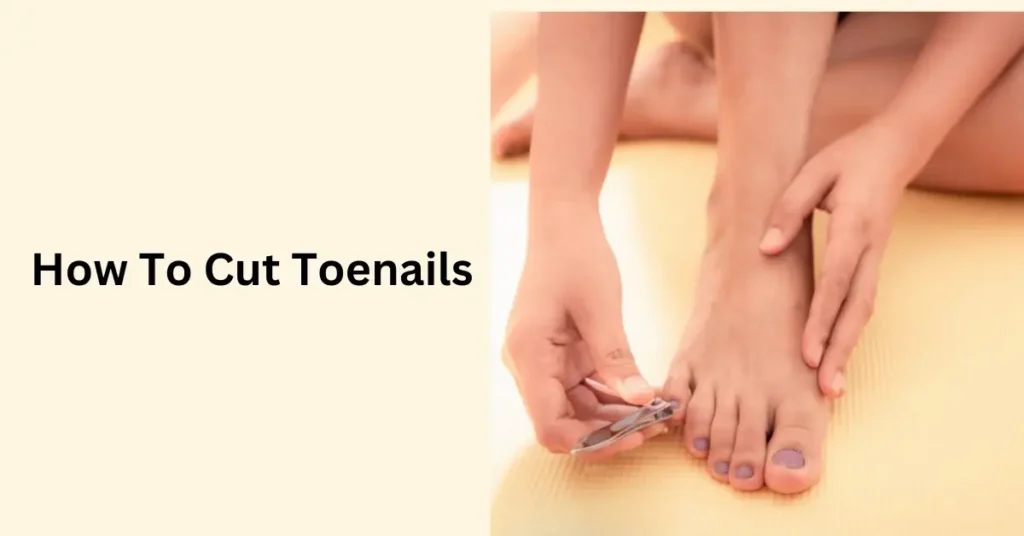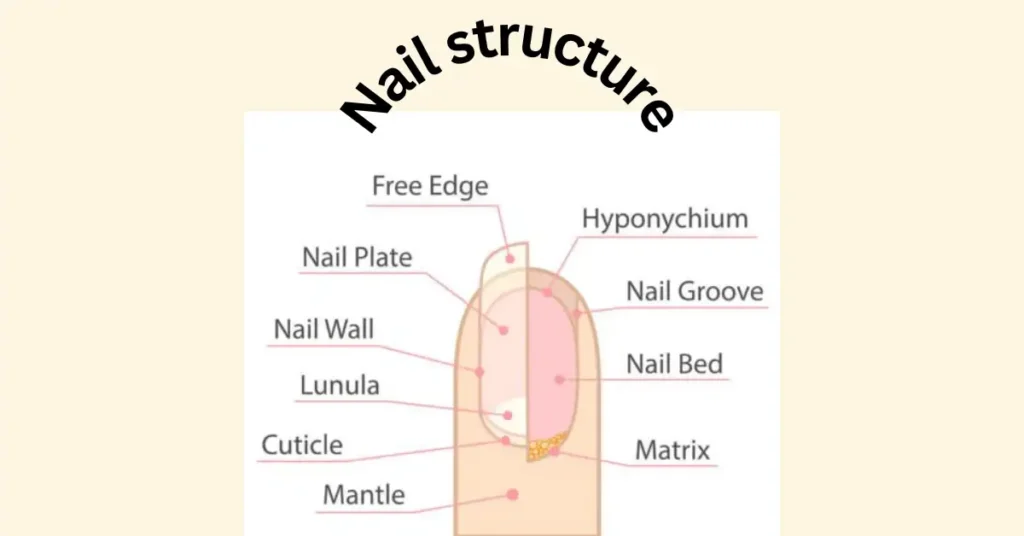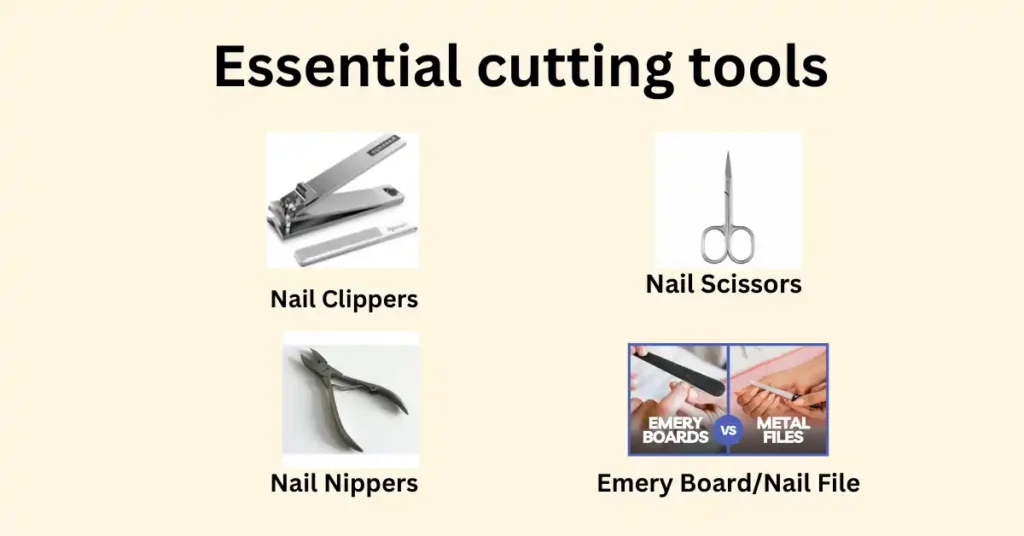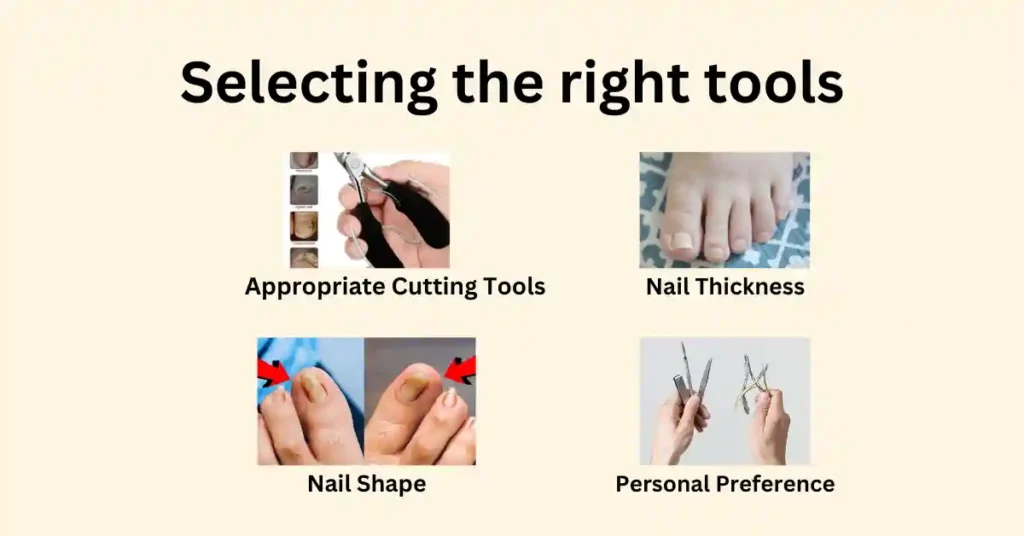Embark on a journey to impeccable foot health by mastering the art of proper toenail cutting! This guide outlines essential techniques and emphasizes meticulous foot care’s comfort and hygiene benefits. Dive in to transform this routine task into a cornerstone of your personal care regimen.

Table of Contents
Understanding toenail anatomy
To effectively cut your toenails, it is essential to start by understanding their anatomy. These protective coverings for your toes play a crucial role in maintaining the health of your feet.
Nail structure and function
Toenails, composed of layers of tough keratin protein, form the visible part of the nail plate that protects the tip of the toe. This nail plate rests on a nail bed, a pinkish-hued tissue rich in blood vessels and nerves, with a matrix just beneath the cuticle where new cells are produced and older cells are pushed outward, facilitating healthy and regular growth. The fully developed nail acts as a protective barrier, guarding against external forces and infections, while also enhancing the sense to feel textures and improve grip for various tasks involving the toes.

Primary functions of toenails:
- Protection: Serve as a protective shield for the sensitive tips of the toes and surrounding tissues from injuries.
- Sensation Enhancement: Help enhance the sense of touch, allowing for sensitivity to textures and the ability to pick up small objects.
- Improved Dexterity and Grip: Aid in gripping surfaces and contribute to the skill needed for precise, small tasks using the toes.
Common toenail issues
- Protective Nature: Despite their protective function, toenails can suffer from various ailments due to their exposure and use.
- Common Toenail Issues: These include ingrown toenails where the the nail grows into the surrounding skin, often causing pain, redness, and a potential for infection.
- Fungal Infections: Conditions like onychomycosis occur when fungi invade the nails, leading to symptoms such as discoloration, thickening, and nail brittleness.
- Nail Trauma: Injuries or repetitive pressure on the nails can cause deformities and disrupt normal nail growth.
- Nail Psoriasis: This skin condition affects the nails directly and can lead to aesthetic and structural issues like pitting and separation from the nail bed.
Tools and equipment for cutting toenail
Using the right tools and equipment is essential for an effective toenail-cutting experience; proper tools ensure precision and contribute to maintaining the health of your nails and the surrounding skin.
Essential cutting tools
- Nail Clippers: The most common and convenient tool for cutting toenails, available in sizes and styles such as straight-edge and curved-edge clippers, which cater to different nail shapes and preferences.
- Nail Scissors: Offer more control and enable precise trimming, particularly suitable for individuals with thicker or ingrown toenails; also useful for shaping nails and removing hangnails.
- Nail Nippers: Feature a powerful cutting mechanism, making them ideal for thick and tough toenails that are difficult to trim with regular clippers, and are helpful for individuals with nail deformities.
- Emery Board/Nail File: Used to smooth the edges of freshly cut nails, helping to prevent sharp edges that might cause discomfort or snag clothing.

Selecting the right tools
- Appropriate Cutting Tools: Choosing the right tools for cutting toenails strongly depends on individual needs and specific nail conditions.
- Nail Thickness: Consider using professional toenail clippers or nail nippers for thicker nails, as these are more sturdy compared to standard clippers meant for thinner nails.
- Nail Shape: Curved-edge clippers or scissors are better for individuals with curved or ingrown toenails, helping to avoid injury and manage nail shape more effectively.
- Personal Preference: Some people find clippers more comfortable to use, while others prefer the precision offered by scissors, impacting their tool choice based on ease of use and comfort during the trimming process.

Importance of sterilization
- Using Cutting Tools: Always ensure that tools are properly sterilized.
- Prevent Infections: Sterilization is crucial to prevent infections and complications that can arise from bacteria and germs.
- Eliminates Harmful Bacteria: Proper sterilization eliminates harmful bacteria and germs that could enter through an open nail area during the cutting process.
- Sterilize Toenail Clipper: To effectively sterilize a toenail clipper or other cutting tools, wash them in warm, soapy water to remove debris and dirt, then disinfect them with rubbing alcohol or a solution of equal parts water and hydrogen peroxide.
- Allow Tools to Air Dry: After disinfecting, allow the tools to air dry completely before use to ensure no moisture can encourage bacterial growth.
- Regularly Sterilizing Cutting Tools: Regularly sterilizing cutting tools before each use is essential to maintain a safe and hygienic toenail cutting environment.
How to Cut Toenails
Cutting toenails properly is important to prevent painful ingrown toenails and infections. Always clip straight across the nail, use clean clipping tools, and handle thick toenails or toe fungus with special care to avoid cutting into the skin, which can spread the fungus. Each cut should be mindful of the nail’s condition, ensuring that it doesn’t curve and grow into the skin, leading to further pain or infection.
Nail clippers
The first step in effective toenail maintenance is to use the proper nail-cutting tool such as nail clippers or manicure scissors, which are specifically designed for cutting nails. Avoid using regular scissors or knives as these are not appropriate for the task. For toenails, which are broader and thicker, a larger clipper is required. It’s important to use separate clippers for your hands and feet to reduce the chance of transferring bacteria or fungus, and always clean the clippers thoroughly before each use to maintain hygiene.
Cut frequency
To maintain ideal toenail health, cut your toenails every six to eight weeks, as they typically grow a few millimeters each month. For active people, especially athletes or runners, a more frequent trim might be necessary to stay comfortable.
Cutting wet or dry nails
Cutting your nails before a shower ensures a cleaner cut, as dry toenails are less likely to bend or tear. However, for people with very thick toenails, cutting after the shower might make the process easier and more comfortable.
Time between cuts
Determining the ideal time to leave your toenails after a cut is important to avoid health issues. Keeping your toenails at a moderate length, approximately a few millimeters helps prevent conditions like ingrown toenails and reduces the likelihood of them getting caught and torn.
Cutting the nail
To avoid painful ingrown toenails, always cut your toenails straight across. Many people find it easiest to use two cuts: first, position the clippers slightly to the side of the nail to create a straight edge, then remove the rest of the nail with the second cut along the straight line.
Filing the nail
The sixth, final step is to file your nails with an emery board to smooth out any jagged edges that could snag and potentially tear as the nail grows. This crucial step ensures a neat appearance and prevents discomfort or damage.
Tips for cutting toenails
Proper Nail Filing Techniques
- Nail filing: An essential step in toenail care
- Doing it correctly helps achieve a polished finish and maintains nail health
- Follow detailed techniques for effective nail filing
- Choose the right file: Select a fine-grit emery board or nail file
- Look for a higher grit number, 180 or above, which is ideal
- Gently start shaping and smoothing the toenails
- Always file in one direction to avoid a back-and-forth sawing motion, which can weaken and damage nails
- File from the sides of the nail toward the center, a technique that prevents splitting and peeling
- Follow the natural shape of your toenails
- For those who prefer rounded nails: File the edges in a gentle curve
- For those who prefer square nails: File the edges straight across with slightly rounded corners
- Apply gentle pressure while filing to prevent excessive heat and friction that can cause nail damage
- A light touch is sufficient to shape and smooth nails effectively
Maintaining nail shape
- Maintain your desired nail shape to enhance appearance and reduce the risk of snagging and breakage.
- Follow these tips to keep your nails in great condition:
- Trim your toenails regularly, ideally once every two to three weeks, to maintain both length and shape.
- Ensure regular maintenance to prevent overgrowth and minimize the risk of snagging and breakage.
- Use the right tools that are appropriate for cutting and align with your preferred nail shape, such as nail clippers or scissors with specific shape guides.
- Choose tools that help achieve the desired look with precision.
- Avoid abrupt changes when reshaping nails adjust gradually to avoid sudden changes in length and shape, as abruptly altering nail shape can lead to nail weakening and breakage.
Preventing Common Issues
- Prevent common toenail problems by incorporating best practices into your foot care routine.
- Wear proper footwear: Choose shoes that fit properly and provide room for your toes to avoid tight footwear which can exert pressure on toenails, leading to discomfort and potential nail problems.
- Practice good hygiene: Always keep your feet clean and dry, essential after activities that cause excessive sweating; this helps prevent environments where fungal infections can thrive.
- Moisturize regularly: Apply moisturizer to your feet and nails to prevent dryness and brittleness. Well-hydrated nails are less likely to crack or split.
Signs requiring medical attention
- Notice signs that might require consulting a healthcare professional for appropriate diagnosis and treatment.
- Wear proper footwear: Ensure you choose shoes that fit properly and provide room for your toes to avoid tight footwear that can exert pressure on toenails, leading to discomfort and potential nail problems.
- Practice good hygiene: Always keep your feet clean and dry, particularly after activities that cause excessive sweating, as moisture can create an environment where fungal infections thrive.
- Moisturize regularly: Apply moisturizer to your feet and nails to prevent dryness and brittleness. Well-hydrated nails are less likely to crack or split.
- Master the art of proper toenail cutting: Develop this essential skill in foot care and hygiene. Understand toenail anatomy, use the right nail clippers, and implement a step-by-step guide to cut toenails effectively.
- Ensure safe and effective toenail-cutting experiences by following best practices, which contribute to overall foot health and well-being, leading to a happy toenail trimming.
Conclusion
In summary, mastering the proper techniques for cutting toenails is essential for maintaining optimal foot health and preventing common issues such as ingrown nails and infections. By understanding toenail anatomy, using the appropriate tools, and following best practices in nail care, you can transform a basic hygiene task into an integral part of your overall wellness routine.
FAQ,s
How to properly cut your toenails?
To cut your toenails properly, always cut straight across and slightly round the corners to prevent ingrown toenail issues; avoid cutting too far back from the nail bed to discourage the toenails from curving downward as they grow out.
How to shape toenails like a professional?
To shape and clip toenails professionally, use multiple short clips from one side to the other and then file the edges to smooth them, as recommended by professional nail tech Marta Nagorska. Avoid cutting the entire nail in one go to prevent bending and weakening the sides.
